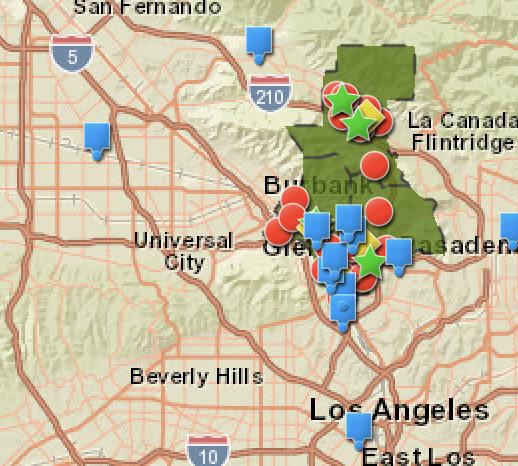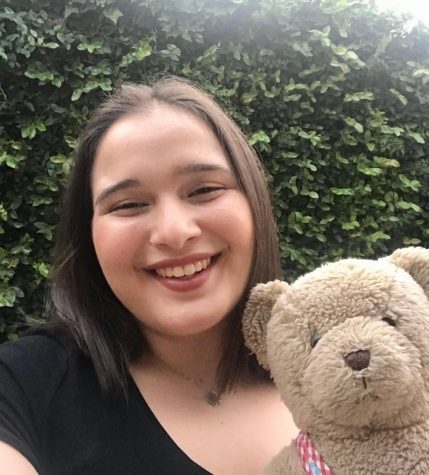Giving reduce, reuse, and recycle a new meaning
Clark’s Environmental GIS devises an environmentally friendly plan to reduce waste when schools reopen

This map depicts all the food banks and shelters within the borders of the GUSD.
Although restricted to the confines of their home, the Honors Environmental GIS class developed new ways to reduce food and plastic waste in schools for the Students Search for Sustainability project. Affected by the growing waste in our community, seven students started to develop new methods in Sept. 2020 and completed their assignment in Feb. 2021. “I wanted to give back to my community after living in it for many years because I feel I owe my community a debt of gratitude,” said senior David Abramyan. He said that hopes for other schools in the district to follow their proposal’s framework.
Seniors David Abramyan, Tadeh Amirkhanian, Nagashreya Guntireddy, Anna Hovhannisyan, Arpi Keshishian, Christina Kmbikyan, and Michaella Reyes targeted three main subjects in their project: reducing plastic use, diminishing food waste and creating more vegan and vegetarian food options at schools. To work at a faster pace, members of the class decided to divide themselves between the three subjects. During the past six months, Environmental GIS joined forces with Assistant Principal Brian Landisi and GUSD Nutrition Service Director Jennifer Chin Gonzales.
One of the first problems they tackled was the food waste produced in the district. GUSD food plans require food meals to fill all categories of the food pyramid. This forces students to take foods that they might not eat and therefore throw away the given food. Members devised a plan to place unwanted food into boxes that will be later sent to shelters and food banks. This proposal will be implemented with the help of Food Forward, a California organization that helps reduce food waste and hunger.
The class also works with Gonzales to create new vegan and vegetarian options that would lessen the greenhouse gas emissions. Senior Arpi Keshishian said that she used surveys in order to determine which options would be the most suitable for the school. “After receiving hundreds of responses, my team and I found that there is a large demand for more plant-based options. We took the data and presented it to GUSD’s nutrition services director, who was understanding with this goal and added more vegan options such as falafel and soy milk to Clark’s menu,” Keshishian said.
In order to reduce the use of plastic in the schools, the district will be switching to the use of paper bags instead of plastic boxes. The elimination of pre-packed utensils will also be put into place, while the adoption of individual utensils will take place. These plans will commence once schools reopen.
The members of the class hope that schools will reopen in order for their plans to take action, and their methods are able to reduce the greenhouse gas emissions and carbon footprint that the food industry creates in our community. Senior Michaella Reyes said that this project helped her city and her insight into the environment. “This project enabled me to see the true extent of our world’s ongoing environmental issues and helped me gain a deeper understanding of the devastating effects our daily needs have on our planet,” Reyes said.

Hobbies/interests: Playing guitar and painting
Fav artist: Queen
Movie you never get tired of watching: Jurassic Park
Goal for the year: Making...









